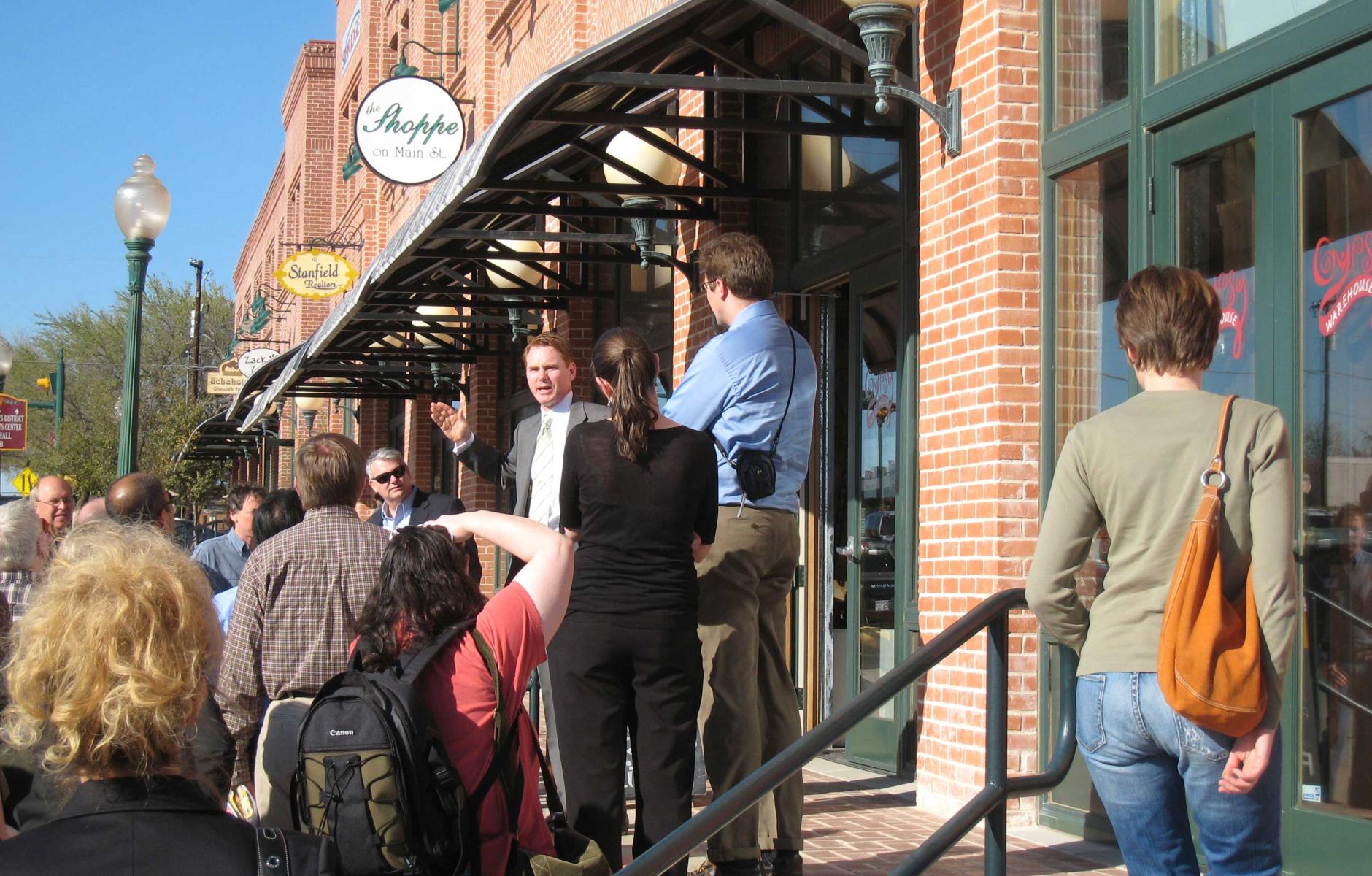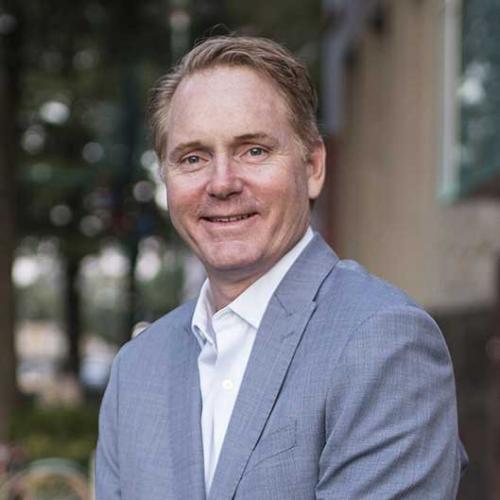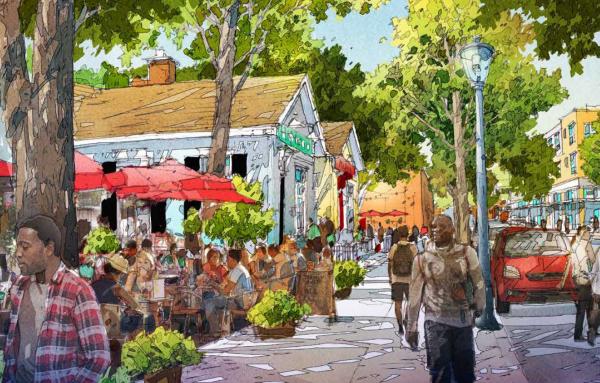
Top 10 techniques for educating community leaders about placemaking
Extraordinary strides have been made in the advancement of placemaking over the past twenty-five years.
Think about it. In the years prior, the term “placemaking” wasn’t even in common use by developers, designers and planners. Nor were terms such as form-based code, new urbanism, smart growth, transect, charrette, visual preference survey, traditional neighborhood development, transit-oriented development, sprawl repair/suburban retrofit, return on infrastructure investment analysis, tactical urbanism, WalkScore, complete streets, context sensitive thoroughfare design, LEED-ND, light imprint infrastructure, WalkUP, the original green, lean urbanism, the high cost of free parking, etc.

What has not changed over the last 25 years is that decisions regarding the growth and development of our communities are still being made by community leaders who might be experts in politics, but do not have an adequate understanding of placemaking principles.
Uninformed decisions can lead to bad results. You are familiar with the types of poor policy decisions that spring from this uninformed position— all road widenings are “improvements,” all density is bad, the public works department should treat an urban area exactly the same as a suburban area, etc. For those of us who are focused on improving our communities through competent urban design, this is a source of great frustration.
So here are my Top 10 Techniques for Educating Community Leaders about Placemaking. If you find yourself similarly frustrated, consider the following tools for those you believe are open to enhancing their knowledge (not everyone is).
1. Lunch. Lunch is rarely adequately leveraged because it is viewed as nothing more than… lunch. But your placemaking initiatives are essentially political issues, and if you want political support you need to build trust with leaders. Whether it is lunch, breakfast, dinner or drinks, start building the relationship and along the way view it as an opportunity to provide valuable information that will help the leader make more informed decisions. And budget for it.
2. Speaker Series. Establish a formal speaker series that brings compelling practitioners to town to speak about your community’s hot topic issues. If you need to gain a lot of ground in a short amount of time, try to put together a monthly series that lasts one year like Chad Emerson did in Montgomery, Alabama. The value in that program was not simply found in the speakers, but in the periodic gathering of community leaders where placemaking issues were the focus. Also consider finding partner organizations who can sponsor or co-sponsor stand-alone events at least once a year like the annual “Smart Growth Luncheon” series that the Independent publishing group has facilitated for the past eleven years in Lafayette, Louisiana.

3. Private Meetings with Speakers/Consultants. When a speaker or consultant comes to town, do not rely upon public events to connect with community leaders. Rather, schedule private meetings where frank discussions can occur without the fear of media coverage. Try to schedule these meetings over a meal if possible. When I conduct Smart Growth Workshops for a local association of the National Association of Realtors, the private meetings are oftentimes more important than the public workshops themselves.

4. Local or Regional Conferences. The Center for Planning Excellence has hosted the multi-day Louisiana Smart Growth Summit in Baton Rouge for the past ten years. It brings national speakers to town, and this recurring dialogue has dramatically improved the quality of projects in the region and state. The Institute for Quality Communities in Oklahoma is another regional organization that is making a difference with this tool.

5. National Conferences. While joining a community leader at the annual Congress for New Urbanism, or the New Partners for Smart Growth Conference or the International Downtown Association Conference is an outstanding way to enhance the knowledge of that community leader, the truth is that it is very hard to do this because most community leaders are unwilling to take the three or four days away from their busy schedules to attend unless they are already fully on board with your placemaking initiatives.



6. CityBuilding Exchange. The CityBuilding Exchange is designed to overcome the objections to other national conferences by compacting the content into two days, limiting participation to 100 registrants, holding the event in a place filled with placemaking lessons (this March it will be in New Orleans), and focusing the content on the tools and ideas that community leaders need to understand from the nation’s leading practitioners.

7. Field Trips/Walking Tour. A field trip with community leaders to a place that can serve as a model for where you want to go (or where you do not want to go) as a community is a highly effective educational tool because it permits the conversation to get real. After attending a SmartCode Workshop in 2003, Texas Representative Mike Krusee facilitated a field trip of all of the mayors in the Austin region to visit Washington, D.C. so that those leaders could better understand how transit oriented development could improve the quality of life in the Austin region. In 2004 Austin approved its first commuter rail referendum. Note that the field trip also permitted the building of relationships between community leaders that can form the basis of working together in the future. Finally note that a walking tour can be incorporated into a field trip (or be a stand alone event in your community) where an expert in urban design can take community leaders on a walk down a street and talk about the urban design elements that are working as well as those that are not working. Once again, these trips bring to life the concepts in a way that gets beyond the platitudes on placemaking.


8. Personal Emails. National news articles, local news stories or the release of a new study on an important placemaking topic can serve as an opportunity for you to email a community leader with your perspective on an issue. Instead of simply forwarding the information to the community leader, make sure that you clearly and succinctly state how the information relates to making your community better.
9. Webinar/OnLine Video Presentations. Watching webinars (whether new or old) or online video presentations together with community leaders can be a difficult sale, but it is worthy of your consideration — especially if you set it up as a “lunch ’n learn” event or even have end of the day cocktails. This tends to work better with community leaders who are on city staff as opposed to elected politicians.
10. Books, Web Sites, Blogs and eNewsletters. Provide resources to community leaders so that they can learn more on their own. Your efforts should focus on two basic approaches. First, buy a book or series of books that are particularly relevant to your community, then loan or give those books to community leaders. In my community, I use Jeff Speck’s book, Walkable City as the introductory primer on placemaking. Second, have a very, very, very short list of resources such as websites, blogs, a LinkedIn Group or e-newsletters that you can recommend as an ongoing source for information.
 |
 |
  |
 |
Quality Information, Patience and Persistence = Success. Regardless of the tools you choose to use, remember that the mission will not be accomplished in a day. But, if you exercise patience and persistence, you will improve your community by arming your community leaders with the information they need to make better decisions.
Nathan Norris is CEO of the Lafayette, Louisiania, Downtown Development Authority. This article first appeared on the Placeshakers blog.







